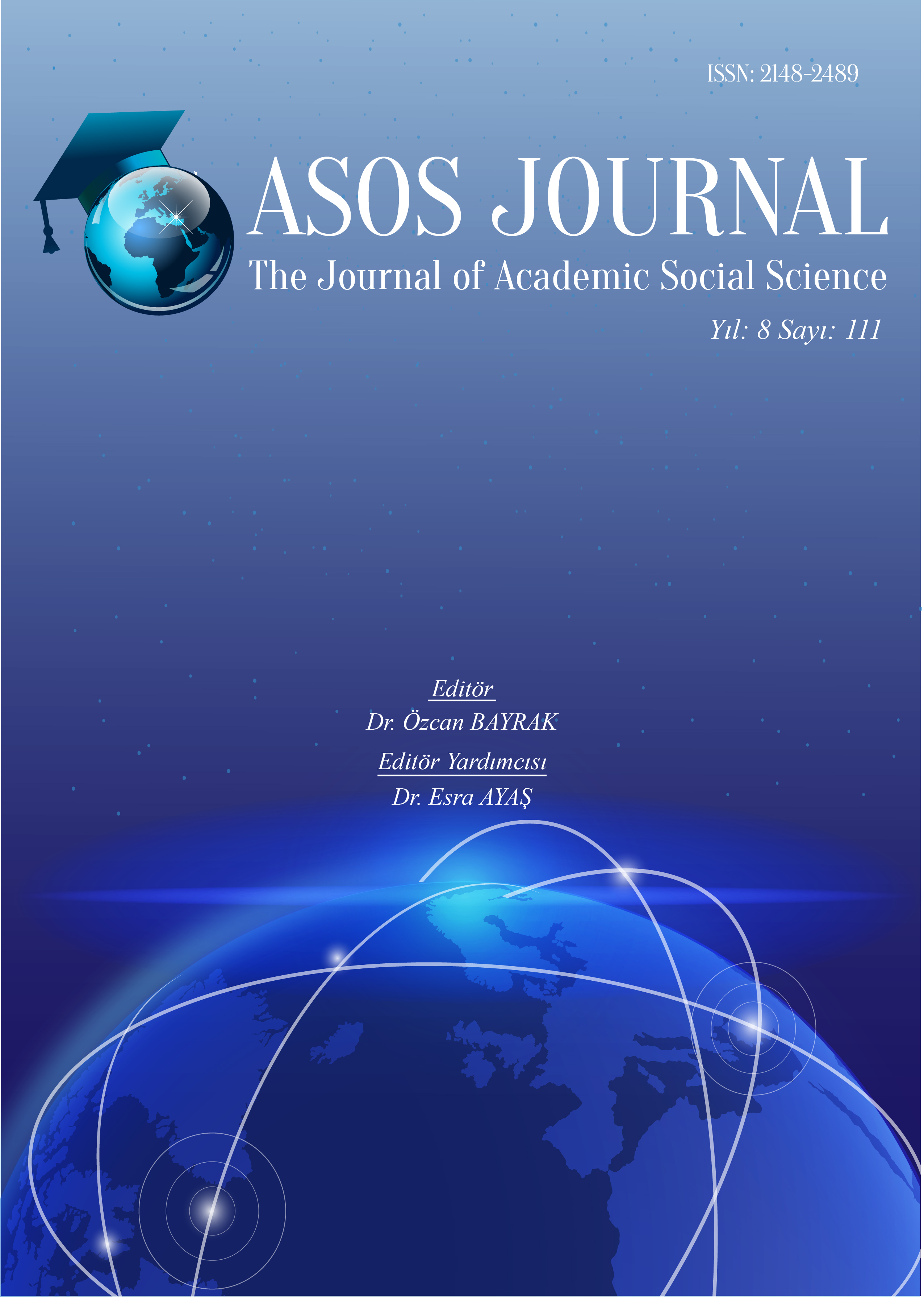Author :
Abstract
Bu çalışmamızda; hentbolcuların çabukluk ve çeviklik değerlerinin oyun pozisyonlarına göre karşılaştırılması amaçlandı. Araştırmaya Türkiye hentbol federasyonu 2. liginde aktif olarak hentbol oynayan 5 kaleci, 10 orta oyun kurucu, 5 sağ oyun kurucu, 5 sol oyun kurucu, 5 sağ kanat,5 sol kanat ve 5 pivot olmak üzere toplam 40 erkek hentbolcu gönüllü olarak katılmıştır. Deneklerin çeviklik performansı değerlerinin tespitinde illionis çeviklik testi, çabukluk performansı değerlerinin belirlenmesinde ise; 5 metre çabukluk testi kullanıldı. Çalışmamızda çabukluk ve çeviklik performanslarında en iyi değerlere sağ ve sol kanat oyuncuları ile sağ-sol oyun kurucu pozisyonunda oynayan oyuncuların sahip olduğu en kötü değerlere ise pivot bölgesinde oynayan oyuncuların sahip olduğu gözlemlendi. Çalışma sonuçlarına göre çabukluk çeviklik değerlerinin oyun pozisyonlarına göre farklılık göstermesinin, oyuncuların oyun pozisyonlarına göre farklı fiziksel özelliklere sahip olabileceği ve oynamış oldukları oyun pozisyonlarına göre farklı antrenman uygulamalarına tabii tutulabileceğinden kaynaklandığını düşünmekteyiz.
Keywords
Abstract
In this study; It was aimed to compare handball players' speed and agility values according to their playing positions. Research in Turkey handball federation 2. league active handball playing 5 keeper, 10 central playmaker, 5 right quarterback, 5 left playmaker, 5 right, 5 left, and was attended by 5 volunteered a total of 40 male handball players, including pivot. The illionis agility test is used to determine the agility performance values of the subjects, and the quickness performance values; 5 meter speed test was used. In our study, it was observed that right and left wing players had the best values in their quickness and agility performances and players playing in the right-left playmaker position had the worst values in the pivot zone. According to the results of the study, we think that the difference in agility values according to the game positions is that the players may have different physical characteristics according to their playing positions and they can be subjected to different training practices according to the game positions they play.
Keywords
- Bulgurcuoğlu, A.N., Karadenizli, Z.İ. (2018). Hentbolda dayanma Adımlı Kale Atışındaki Top Hızı ile Reaksiyon Zamanı, Çeviklik ve Antropometrik Özellikler Arasındaki İlişkiler. Akademik Sosyal Araştırmalar Dergisi, Yıl: 6, Sayı: 82, Kasım2018, s. 302-313
- Cardinale, M. (2001). Handball Performance: Physiological Considerations and Practical Approach for Training Metabolic Aspects. Materials From 3rd & 4th Congress Sport Medicine & Handball from: http://www.sportscoach-sci.com
- Drake, D., Kennedy, R., Godfrey, M., MacLeod, S., Davis, A., & Maguire, M. (2017). A step towards a field based agility test in team sports. A perspective on return to play criteria. Physical Therapy in Sport, 28, e20.
- İnce, G., Gürbüz, T., Dikici, K. (2010). Üniversiteler Hentbol B Kategorisindeki Takımların, Mevkilerine ve Demografik Özelliklerine Göre Problem Çözme Becerilerinin Karşılaştırılması. Milli Eğitim Dergisi. Sayı-188.
- Koç H., Özcan K., Pular A., Ayaz A. (2007) Elit Bayan Hentbolculara İle Voleybolcuların Bazı Fiziksel ve Fizyolojik Parametrelerinin karşılaştırılması, Spormetre Beden Eğitimi ve Spor Bilimleri Dergisi, Cilt3, Sayı 3, s.124. Ankara.
- Koç, H., Gökdemir, K.,( 2008). Üniversite Erkek Hentbol Takımında Oynayan Hentbolcuların Oynadıkları Pozisyonlara Göre Reaksiyon Zamanlarının Karşılaştırılması. Gazi Beden Eğitimi ve Spor Bilimleri Dergisi (Gazi BESBD), XIII, 1: 33 - 38
- Little T, Williams A. G. (2006). Suitability Of Soccer Training Drills For Endurance Training. The Journal of Strength Conditioning Research, 20(2), 316–319.
- Moreno E. (1995). Developing Quickness, Par II. : Strength % Conditioning Journal. Strenght and Conditioning Journal, 17(1), 38-39.
- Paul, D. J., Gabbett, T. J., & Nassis, G. P. (2016). Agility in team sports: testing, training and factors affecting performance. Sports Medicine, 46(3), 421-442.
- Sheppard, J. M. & Young, W. B.(2006). Agility literature review: classifications, training and testing. Journal of Sports Sciences, 24(9), 919-932. https.//doi.org/10.1080/060410500457109
- Şentürk, İ. (2016). Elit Hentbolcularda Sürat, Çeviklik ve Kuvvet Parametrelerinin Pozisyonlara Göre İncelenmesi. Marmara Üniversitesi Sağlık Bilimleri Enstitüsü. Yüksek Lisans Tezi. Beden Eğitimi ve Spor Anabilim Dalı. İstanbul.
- Taşkın, C., Karakoç, Ö., Taşkın, M., Dural, M., (2016). Analysis of Reaction Times and Aerobic Capacities of Soccer Players According to Their Playing Positions. Journal of Education and Training Studies Vol. 4, No. 8; ISSN 2324-805X E-ISSN 2324-8068
- Tillaar, R.V. (2004). “Ettema”, Euopean Applied Physiogly 91(1), pp.413- 418.
- Wagner, H. Klous, M., Müller, E. Symposium xxıv ISBS, Salzburg-Austria. 2006;161–164.
- Yıldırım, İ. (2009). “Elit Düzey Erkek Hentbol Takım Oyuncularının Antropometrik Özelliklerinin Dikey ve Yatay Sıçrama Mesafesine Etkisi”, Afyon Kocatepe Üniversitesi Sağlık Bilimleri Enstitüsü, Anatomi Anabilim Dalı, Doktora Tezi, Afyonkarahisar.
- Zemková, E. (2016). Differential contribution of reaction time and movement velocity to the agility performance reflects sport-specific demands. Human Movement, 17(2), 94-101
- Ziv G, Lidor R. (2009). Physical characteristics, physiological attributes, and on-court performances of handball players: a review. Eur J Sport Sci.(6):375-86.
